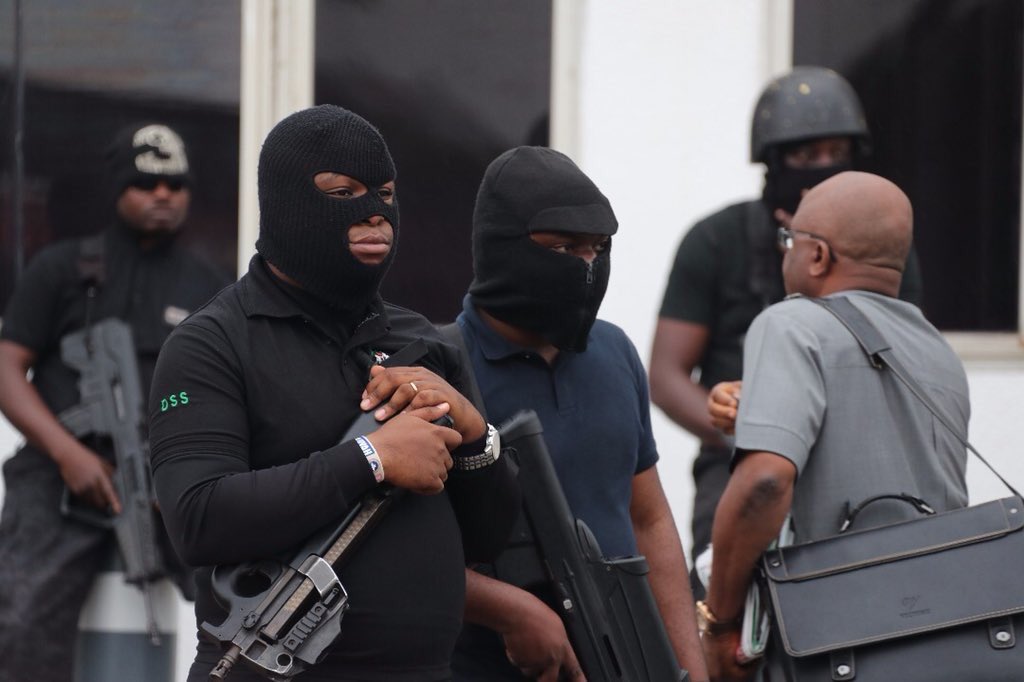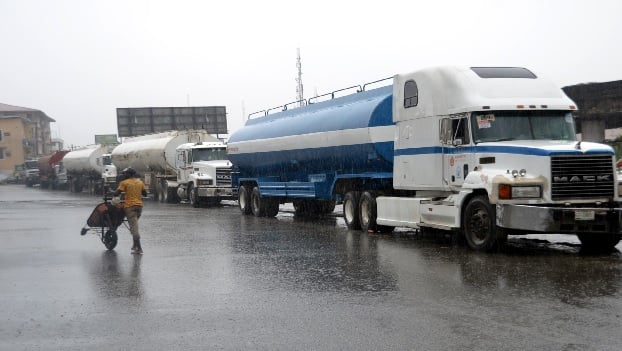The siege at the gate of the National Assembly complex by the operatives of the Department of State Security Services (DSS) on Monday, August 7, 2018, in which they shut out lawmakers for hours, has continued to dominate news headlines. The outcry that followed the siege was based mainly on concerns that the APC controlled federal government was trying to use strong-arm tactics and unconstitutional means to impeach the Senate President, Bukola Saraki and his deputy, Ike Ekweremadu.
In this piece, I will reflect on the events of the siege and the likely fallouts from it:
One, a major concern raised by the siege was that the action amounted to a grave threat to the country’s nascent democracy. Yes, the action was a threat to democracy but not in the simplistic and political manner in which it was couched. The truth is that a country’s democratic space is elastic and is an arena of constant contest between contending social groups and forces. These contestations could sometimes lead to temporary contractions in the political space as we saw under Obasanjo’s civilian regime without the democracy project itself ever being in grave danger. Quite often it recovers from such temporary contractions to an exponential expansion – depending on the balance of power among the contending social groups.
Ironically just as you cannot have victory without fighting a war or surmounting a strong challenge, the democratic space cannot expand unless there is a contest between two opposing forces and a victory by democratic elements. So what is simplistically called ‘threat to democracy’ is often a test of the resilience of a country’s democracy project. We see this clearly in the USA where the emergence of Donald Trump as President has simultaneously activated forces that are eager to mainstream right-wing populism and galvanized forces that are vigorously opposed to that tendency.
Advertisement
The democratic space is measured by the extent of freedoms available to citizens and the vigour with which they are defended. The relevant freedoms include freedom of speech, freedom of the press, freedom of assembly, rule of law and the use of periodic elections to recruit political leaders. Though governments are regarded as the greatest threats to democracy, non-state actors, especially those that contest ungoverned spaces can also pose threats to the democratic space.
The siege at the National Assembly was really more of a test than a threat to our democracy. Even if the siege had succeeded and a leadership of the National Assembly illegally changed, that would not necessarily mean a contraction of the democratic space unless such illegal methods of effecting change of the leadership of the National Assembly becomes accepted as the norm. Given the uproar against the siege, and the promptness with which it was defeated and the DG of the DSS summarily sacked and reportedly detained, it can be argued that our democracy not only passed the test but was also probably strengthened by it as a benchmark has been set that such a Gestapo method of dealing with the Legislative arm of the government is unacceptable.
Two, it is necessary to underline that groups that are perceived as fighting for the advancement of democracy and forces opposing them are quite often animated by private gain rather than any public good – despite the facade they use to mask their private interests.
Advertisement
However, between the contending groups, one group’s strategy may pose more threat or be more beneficial to democracy. This means that democratic elements can afford to take sides in such dog fights without necessarily agreeing to the end game of the group they are allying with. This is the point that those accusing Saraki of instigating the whole siege in order to win public sympathy fail to understand. Assuming (without conceding) that he instigated the whole siege, purely on the matter of strategy used by him and his traducers (the federal government), he was not the one that used unconstitutional strategy that would evoke the anger of democratic elements. The collective anger over the siege was therefore more a defence of democracy than of Bukola Saraki as a person or his political ambition.
Three, there are competing narratives and conspiracy theories resulting from the siege: one version is that the whole affair was instigated by President Buhari before he travelled to London so that he could preserve his ‘Mr Integrity’ image while the plot was being executed, allowing Prof Osinbajo, the Acting President, to take the piss if it went awry. This version of the competing narratives believes that Professor Osinbajo turned this to his advantage by acting decisively – to the acclaim of democratic elements both locally and internationally.
Another perspective was that the siege was a continuation of the factional in-fight within the ‘cabal’ between forces loyal to the National Security Adviser Babagana Monguno, (where the Vice President is thought to belong) and those loyal to Mamman Daura, President Buhari’s powerful nephew (which was thought to have the sacked Hassan Daura as their foot soldier). According to this narrative, the Daura camp has little regard for Professor Osinbajo and therefore did not find it necessary to inform him of their plan as the Acting President. According to this line of argument, an enraged Prof Osinbajo, on learning of the action over the television like the rest of us, and given the national and international uproar that attended the siege, called Buhari in London and threatened to resign unless Hassan Daura was sacked.
A third major narrative was that the plot was hatched between the APC chairman, Adams Oshiomhole, (often known for his compunctious rhetoric), the President’s chief of staff Abba Kyari and the sacked DSS chairman Hassan Daura. According to the story, Oshiomhole, eager to impress Buhari as a no-nonsense person, plotted a forceful change of the leadership of the National Assembly without the knowledge of Buhari or the Acting President. As the story went, while a caucus of the APC was meeting somewhere to perfect its strategy on how to move to the National Assembly en masse to effect a leadership change, PDP officials got wind of it and decided to be at the National Assembly premises as early as possible to raise national and international outcries. In this narrative, the siege failed because the PDP beat the plotters at their game.
Advertisement
There is yet another narrative promoted by APC supporters in which the sacked Hassan Daura is regarded as a fifth columnist in the Buhari government. According to this story, Hassan Daura had all along been working for Bukola Saraki and the National Assembly siege was a plot between him and Saraki to embarrass Buhari and the APC.
It remains unclear where the truth lies in the competing narratives and conspiracy theories.
Four, who are the winners and losers from the aftermaths of the siege at the gates of the National Assembly? Some of the clear winners include Prof Osinbajo whose stock as a leader rose astronomically not just by the courage he displayed in sacking the very powerful Hassan Daura but also by the decisive manner he did it; Bukola Saraki, who is now seen as a master political strategist who has been able to surmount all the obstacles laid on his way by the government, including surviving the various attempts to remove him as Senate President in the last three years; and the group of Senators who resisted stoutly the siege at the National Assembly gate, including Senator Ben Bruce who took a clear stand on the issue. Also included among the winners are numerous Nigerians who spoke out or used the social media to come out forcefully against the siege.
The losers – for now at least – are obviously all the people linked to the failed siege in one or more of the competing narratives. They include Hassan Daura who was sacked as the DG of DSS; Adams Oshiomhole, who may face new challenges to his leadership of the APC, the Mamman Daura faction of the cabal and of course Buhari who was alleged by some to be part of the plot. The APC, which has been on the defensive over the siege, is also a loser in the affair. It should be underlined that after the siege, the APC and PDP are now struggling to control the narration of the event. This contest over narrative will probably become clearer when Buhari returns from his London trip and is briefed by his loyalists from both factions of the ‘cabal’.
Advertisement
Add a comment







